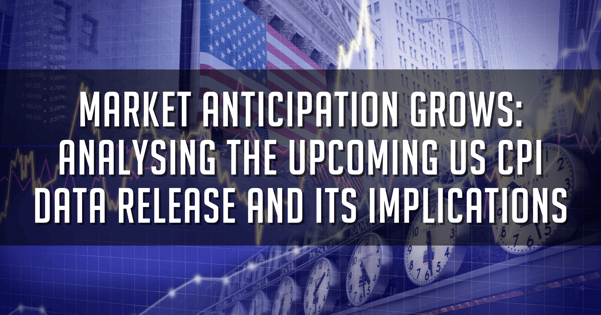Market Anticipation Grows: Analyzing The Upcoming US CPI Data Release And Its Implications

As the August consumer price index (CPI) prepares for its midweek release, investors eagerly await this pivotal economic indicator. This report carries significant weight as it represents the final major inflation data point before the Federal Reserve's September meeting.
Economists' consensus indicates a 3.2% year-over-year increase in the headline CPI, aligning with the July uptick. Simultaneously, the core CPI, which excludes the volatile food and energy sectors, is projected to have risen by 4.3% on a year-over-year basis. This pace, albeit slower than the prior reading of 4.7%, underscores the persistent nature of inflationary pressures.
The forthcoming CPI figures will be closely scrutinized by investors, as they hold the potential to influence market sentiment significantly. A CPI report exceeding expectations may further exacerbate concerns regarding entrenched inflation and the potential for a more stringent monetary policy, thereby exerting downward pressure on equities. Conversely, an unexpectedly subdued report could invigorate investor confidence, potentially driving stock prices and risk currencies higher.
The continued robustness of the US labor market is an additional factor contributing to the prevailing economic backdrop. Recent data reveals that initial weekly jobless claims, released last Thursday, came in below the anticipated 230,000 mark. These signs of a resilient US economy, avoiding the specter of recession, heighten apprehensions among investors that the Federal Reserve may need to continue its efforts to curb inflation. Consequently, the possibility of another rate hike later this year remains a speculation, with traders assigning a roughly 44% probability to a 25 basis points increase in November.
Over the past two months, the 10-year Treasury yield has ascended by half a percentage point, hovering around 4.25%, levels last witnessed in the previous autumn and 15 years ago. This upward trajectory reflects both the current strength of the economy and the market's pricing of a Federal Reserve intent on maintaining higher rates for an extended duration.
Market participants closely monitor these fluctuations in yield, albeit with uncertainty regarding the economy's capacity to absorb them. A similar apprehension pervaded the market last year when the 10-year yield exceeded 3%. Some cautious investors contend that the stock market's current valuations hinge on the anticipation of future Federal Reserve rate cuts. While this hypothesis remains unproven, it is notable that the futures markets are already pricing in the potential for a rate cut by May.
More By This Author:
Stocks Pick Of The Week - Stock Market Faces Murky September Outlook Amid Heightened UncertaintiesUS Jobs Report Says Fed Will Hold This Month, Will That Help Stocks?
US Labor Market Report Looms: A Crucial Factor In Fed's Interest Rate Decision
Disclaimer: Trading foreign exchange on margin carries a high level of risk, and may not be suitable for all investors. The high degree of leverage can work against you as well as for you. ...
more


